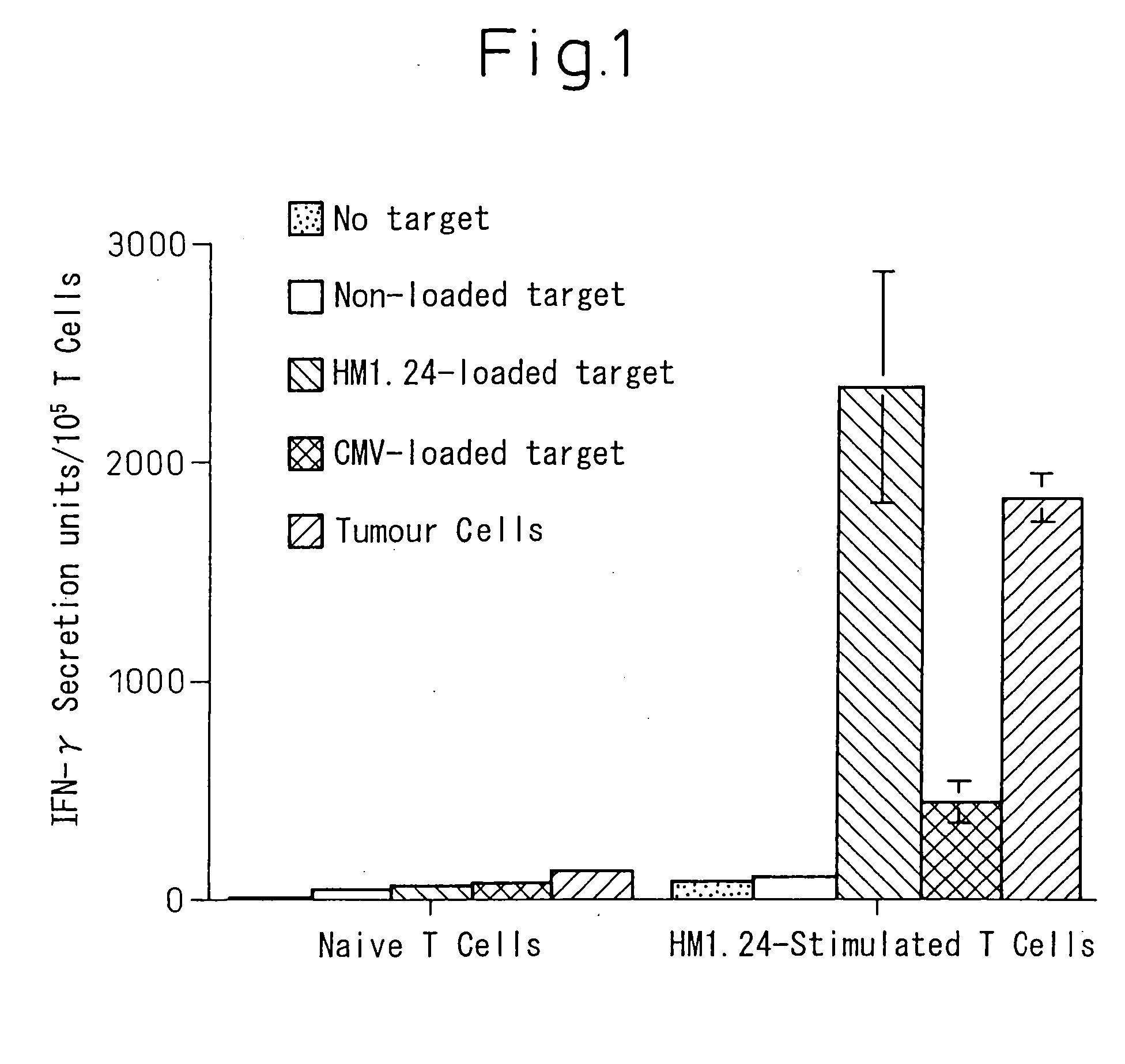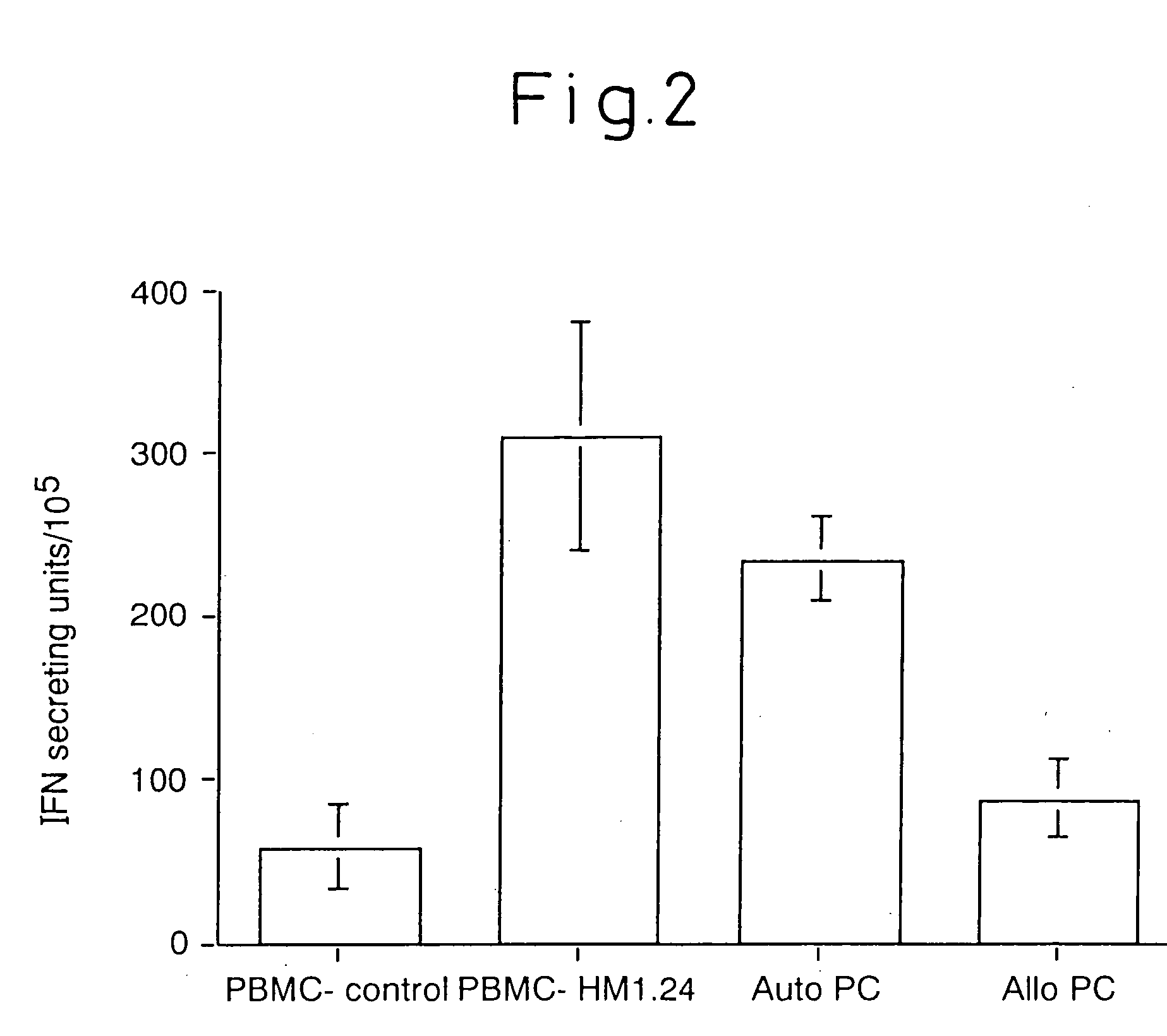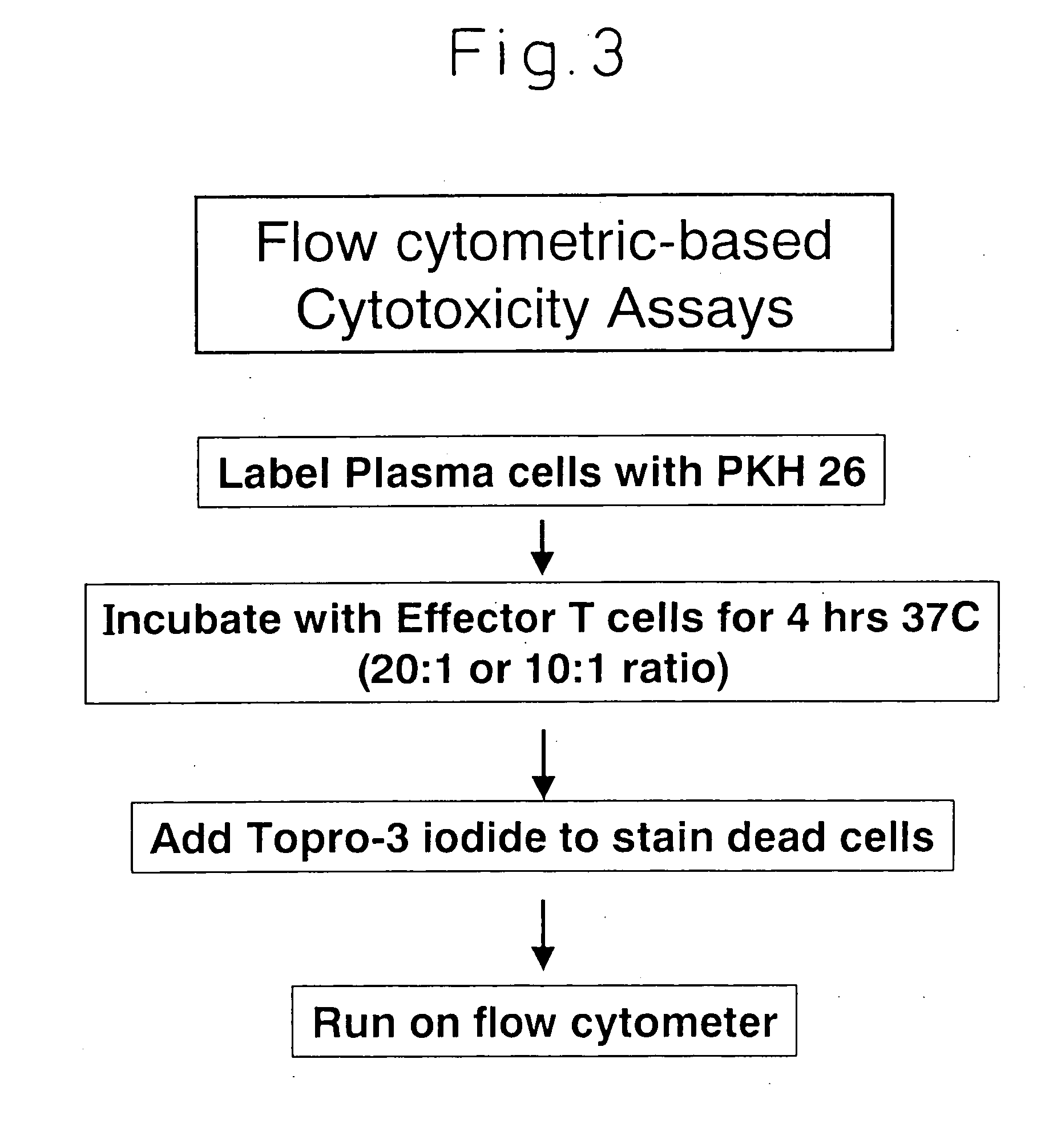HM1.24-utilizing cancer vaccines
a cancer vaccine and cancer antigen technology, applied in the field of cancer vaccines utilizing cancer antigens hm1 and hm1, can solve the problem of not being able to cause dendritis
- Summary
- Abstract
- Description
- Claims
- Application Information
AI Technical Summary
Problems solved by technology
Method used
Image
Examples
example 1
Effectiveness of Stimulation of T Cells by Dendritic Cell Pulsed with HM1.24
[0084] A leucapheresis fraction containing 3×108 peripheral monocytes was incubated for 2 hours in an RPMI medium containing 10% FCS to effect cell adhesion, and non-adhering cells were removed, and the culture medium was exchanged with an X-vivo 20 medium containing 10% autoserum, GM-CSF and IL-4, whereby dendritic cells were established. The dendritic cell thus prepared was pulsed by adding HM1.24 protein, and then incubated with 300 ng / ml of a CD40-ligand as a maturing agent, whereby accomplishing the maturation. Then, the dendritic cells were collected, washed with HBSS, and resuspended in X-vivo medium containing 5% autoserum. Cells were then irradiated at the dose of 25Gy, cells were washed again, and resuspended at the density of 3×105 cells / ml.
[0085] On the other hand, the frozen cells described above were thawed, washed, counted and resuspended in the medium containing IL-7 (10 ng / ml) and IL-12 (1...
example 2
[0091] We proceeded to test the cytolytic capability of these HM1.24 specific T cells. Plasma cell targets were labeled with PKH26, incubated with effector T cells for 3 hours at 37° C., and TOPRO-3-iodide was added to stain the dead cells. Percent live / dead targets were then quantified by flow cytometry.
[0092] Baseline target cell death ranged from 4-24% with a median of 9.8%. T cells raised against HM1.24 demonstrated potent cytotoxic activity against autologous plasma cells (E:T ratio 20:1 median 63% specific killing, range 33-79%, E:T ratio 10:1 median 55%, range 21-75%, n=4) but not against allogeneic plasma cells (median 4% killing, range 0-9.7%).
[0093] Control T cells generated from co-culture with non-protein pulsed DC demonstrated minimal cytotoxicity against either autologous (median 13.7% killing range 11-20, n=3) or allogeneic (5.0%, 11.0% killing) plasma cells. CTL activity against autologous plasma cells was inhibited by anti-Class I mAb (median 94% inhibition, range...
example 3
[0106] Finally, the lysis of autologous plasma cells by HM1.24 specific CTL was blocked in the presence of competitive “cold” targets, which were autologous DC transfected with cDNA encoding HM1.24 (43.8% inhibition when “cold” targets were present at a 3:1 ratio, 93.4% inhibition at a 10:1 ratio). Blocking of plasma cell lysis was not observed when unmanipulated DC were present in the cytotoxicity assay. HM1.24 primed T cells comprised 66±8% CD3+ CD8+T cells, with the remainder being CD3+ CD4+ cells.
Transfection of DC with Plasmid DNA Containing HM1.24
[0107] Plasmid DNA was isolated using Megaprep and quantified by spectrophotometry. The transfection mixture was made up using serum free medium (X-vivo 10, Life Technologies, UK) with FuGENE 6 transfection reagent (Roche Diagnostics Corporation, USA) and plasmid DNA. The FuGENE reagent was used at 6 μL to 2 μg of DNA, in a total volume of 100 μL, and the mixture was allowed to stand at room temperature for up to 2 hours before add...
PUM
| Property | Measurement | Unit |
|---|---|---|
| density | aaaaa | aaaaa |
| density | aaaaa | aaaaa |
| volume | aaaaa | aaaaa |
Abstract
Description
Claims
Application Information
 Login to View More
Login to View More - R&D
- Intellectual Property
- Life Sciences
- Materials
- Tech Scout
- Unparalleled Data Quality
- Higher Quality Content
- 60% Fewer Hallucinations
Browse by: Latest US Patents, China's latest patents, Technical Efficacy Thesaurus, Application Domain, Technology Topic, Popular Technical Reports.
© 2025 PatSnap. All rights reserved.Legal|Privacy policy|Modern Slavery Act Transparency Statement|Sitemap|About US| Contact US: help@patsnap.com



